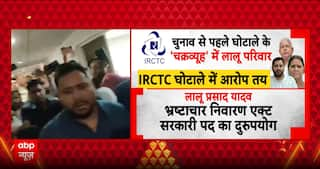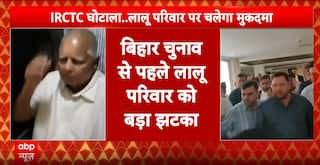Smart Grid Technology: How It Is Revolutionising Energy Management & Efficiency
Smart grid technology revolutionises energy management with the help of different advance digital technologies and automation.

By Tejaswini Gupta
Smart grid technology refers to the integration of advanced digital, communication, and control technologies in the traditional power grid infrastructure. Its main purpose is to manage the energy supply sustainably and effectively deliver it to our households.
Before smart grid technology came about, the traditional power grid infrastructure had the single purpose of transporting the energy generated in the power plants to houses and businesses. But the traditional model was a failure as a lot of energy was wasted due to many loopholes in the infrastructure and the authorities were not able to control the energy as it was run on a large scale. As technologies evolved over the years, the need for a more effective and sustainable way of energy management became more apparent, which will be able to address climate-changing issues, be more reliable and resilient, and be smart in saving electricity.
Smart grid technology focuses on the aspects of a better way of communication and the use of digital technologies in the system. Apart from that, smart grid technology’s goal is to use renewable energy sources like solar energy, water energy, wind, and nuclear energy and with proper monitoring, send it to homes and other places where the need for electricity is more.
Why Smart Grid Is Important
Increasing demand for energy
Due to population growth, urbanisation, and industrial development, the need of India’s energy demand is expected to rise. Smart grid technology enables efficient energy management, load balancing, and demand response, ensuring that the increasing energy demand can be met without overburdening the grid and causing blackouts or supply shortages, which has always been a problem for traditional supply management.
Renewable energy integration
India has set ambitious renewable energy targets, aiming to increase the share of renewables in its energy mix. Smart grids play a vital role in integrating intermittent renewable energy sources like solar and wind power. The technology enables effective monitoring, forecasting, and control of renewable energy generation, facilitating its smooth integration into the grid and reducing curtailment.
Saving aggregate technical & commercial losses
In India, there are several cases of power theft regularly, where a person tampers with the meters and taps electricity lines which leads to losses of crores of rupees every year. Smart grid is a solution to this as its advanced metering infrastructure (AMI) and theft detection system will help to reduce such losses and will benefit revenue collection and financial sustainability.
Fast-tracking of outages
Electricity outages, such as faults and disruptions, are very common in India. Smart grid will enhance reliability and resilience by activating quick detection and restoration of faults. This will lead to certain aspects like fast recovery, improved power quality etc and on the other hand will be benefiting industries, businesses and households.
Energy conservation & efficiency
India pledged to cut its carbon footprint and increase energy efficiency as a signatory to the Paris Agreement. Through real-time data and insights, smart grid technology enables users to track and optimise their energy usage. This encourages energy saving, lowers waste, and aids India in meeting its goals for energy efficiency.
Grid modernisation & infrastructure optimisation
This is required in India to satisfy the needs of a dispersed, digitised, and digitally-based energy system. Smart grids offer the infrastructure required to modernise the grid, making it possible to incorporate cutting-edge technologies like energy storage, electric vehicles, and microgrids. The grid's performance, asset management, and future scalability are improved by this modernisation.
Rural electrification
In India, there are still numerous difficulties present in the rural areas in terms of dependable power supply. By providing effective monitoring, control, and demand management in rural distribution networks, Smart Grid technologies will be able to solve the issues present in rural areas. Additionally, it can support microgrids, last-mile connectivity, and decentralised renewable energy generation, which would increase supply in rural areas.
In 2015, National Smart Grid Mission (NSGM) was started by the Ministry of Power under the Government of India with the vision to make a secure, adaptive, sustainable and digitally strong ecosystem which will be beneficial in the power supply.
Establishing a working smart grid technology is a task that comes with different challenges which will act as a barrier in the development. Some of the most notable ones are:
- Investments are required in this field as the instalment of smart meters and large communication networks can not be done without certain funding. Models that support such large-scale financial projects might be a stumbling block.
- To implement such new technology skilful people will be required who must be experts in the field of IT, data analysis, power management and telecommunication. Training programmes will be essential to be conducted on a large scale that will allow the field to work to its full potential.
- As India is a populated country with so many people living in different flats, buildings and homes in congested areas, it will a big task to upgrade the existing infrastructure to replace it with smart technologies.
- Protecting the smart grid technology from data breaches, cyberattacks, and unauthorised access will be a major task as Smart Grid will generate vast amounts of data from numerous sensors and meters across the country. Making sure that energy wastage or theft is taking place anywhere.
- There will also be a need of spreading customer awareness regarding the change. If citizens will be unhappy with such a system, they will not accept it, so a proper education of smart meters, power supply and cost consumption will be required to be spread.
- New policies and regulatory frameworks will be necessary to implement that will support the deployment of smart grid technologies which will define the technical standards, data privacy and security concerns. All this to do in the current geographical conditions can be tough.
Within a span of a few years, the Indian market has grown a lot due to the increased demand and numerous companies are involved in the development of smart grid technologies. These include — Tata Power Delhi Distribution Limited (TPDDL), Power Grid Corporation of India Limited (POWERGRID), Siemens, Honeywell, ABB, Larsen & Toubro (L&T), Schneider, and many others.
Many companies have involved themselves in this and have provided man significant contributions in the field as Tata Power Delhi Distribution Limited (TPDDL) has introduced advanced metering infrastructure (AMI) which will help in gathering a real-time response and monitoring. They have also implemented a distribution automation system and integrated renewable energy sources into their grid.
These companies, along with other technology providers and system integrators, have played significant roles in driving the adoption and deployment of smart grid technologies in India. They have collaborated with utilities, government agencies, and other stakeholders to develop and implement smart grid projects that enhance grid efficiency, reliability, and sustainability.
Smart grids enable two-way communication and data exchange between various components of the electricity system, allowing for real-time monitoring, control, and optimisation. With the deployment of smart meters and advanced metering infrastructure, utilities can accurately measure and manage energy consumption, leading to improved billing accuracy and load monitoring. The implementation of demand response programmes empowers consumers to actively participate in energy conservation and cost savings by adjusting their electricity usage based on grid conditions and pricing signals. Moreover, smart grid technology facilitates the seamless integration of renewable energy sources, such as solar and wind, into the grid.
In conclusion, smart grid technology revolutionises energy management with the help of different advance digital technologies and automation. It is a big step towards a sustainable India that will empower it to be more useful in handling renewable resources. With continued advancements and widespread adoption, smart grids have the potential to reshape the energy landscape, leading to a more efficient, reliable, and environment-friendly electricity system.






































